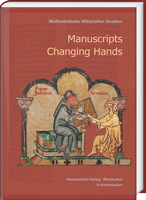|
weitere Titel zum Thema:
Download:
Medieval manuscripts were conceived to move from one set of hands to the next. Holding a book presented possibilities, and possessing a book implied power. Thus, books functioned as potent connectors. They bound producers with consumers, givers with recipients, writers with readers, writers with writers, and readers with readers. Books linked many generations and were intended to last. Hands attached messages in colophons, prayers, scribal notes, glosses, word plays, self-images, and other inserted materials. Hands also left traces in the form of penciled users’ names, threats, curses, corrections, erasures, worn and torn pages, finger prints, and dirt.
Contributors to this collection of essays analyze the ways in which the manuscript medium served and challenged communication. Sensorial empathies helped to construct communal identities that overcame barriers of time, class and calling. Diachronic communities formed around books in both men’s and women’s monasteries. Librarians, collectors, and makers of facsimiles strove to preserve these hand-made, handed down objects. Ten medievalists with specialties in history, musicology, art history, and the history of literature provide articles based on discussions that took place at an international workshop supported by the Deutsche Forschungsgemeinschaft at the Herzog August Bibliothek in Wolfenbüttel in 2012. The volume reflects current issues relating to actor network theory and eco-critical concerns. It appears at the moment in which transient virtual media are replacing enduring material objects as means of communication. |






